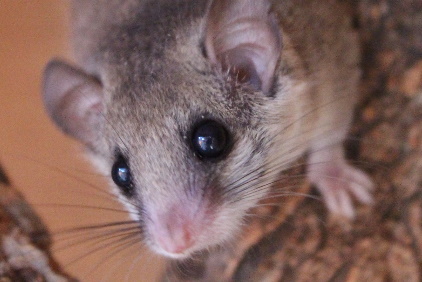African Pygmy Dormice Orphan pups
Raising orphan dormice pups can be very hard, and the chances of survival are very low and nearly impossible if under one week. The following tips should not be considered a substitute for contacting your local wildlife rescue or breeder.
Wild pups
If you have disturbed a nest of wild African Pygmy dormice pups the first thing to do if possible is to ring a local wildlife rescue for advice. They can offer you advice and hopefully take them in themselves, as raising orphaned African Pygmy Dormice pups is very difficult and best done by someone experienced.
If the dormice pups are furred then they are at least 1 week old, and you can check to see if the mum will return to them. If the nest is damaged, try picking the dormice pups up careful with a gloved hand and placing in a makeshift nest such as a small cardboard box or plant pot near where you disturbed them. Monitor for mums return for no more than an hour.
If you need to take the pups inside, place in a secure container such as a plastic or glass tank. Add some warmth such as a hot water bottle full of warm water, not hot. You can also try filling an old sock with rice and heating in your microwave. Shredded paper makes a good nesting material. Then follow the feeding instructions as given below.
Handrearing
Use kitten milk, and a nylon paint brush for your orphan dormice pups. If the litter is very young then kitten milk could cause bloat - warm a small amount of milk on a radiator or in hot water. Do not microwave.
Feed every two hours morning and night and use a alcohol-free baby wipe or moistened cotton bud to stimulate the anus after feeding and encourage them to toilet. This is important as they will not yet have the ability to do this for themselves yet and the mum would normally lick their anus to teach them this.
At two weeks, you can introduce fresh foods. Mushy banana is a good starting point, after feeding milk soften banana between your fingers and let them sniff and attempt to link. If they refuse, try mixing a tiny amount of banana into the milk. If banana is refused, other fruit can be attempt but steer clear of anything strongly acidic.
At three weeks they should be trying more solids. If they are not, just reduce the milk portions to every 4 hours. Try adding some millet seeds and honey to a small shallow dish, and some live mealworms in another.
At four weeks they can have the full feed in a dish, and feed only twice with milk. Continue until they refuse, likely stopping at around 6 weeks.

